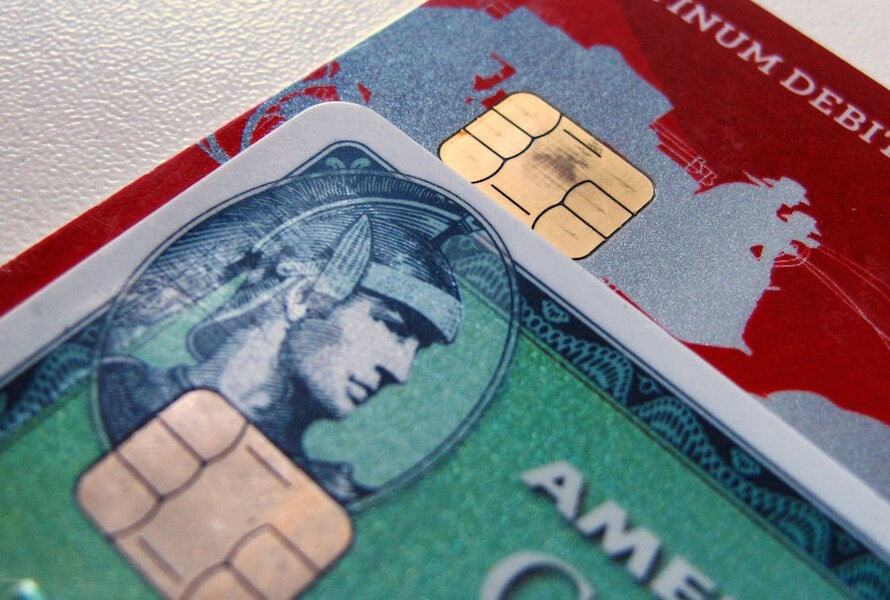Should you send your kid to college with a credit card?
Loading...
That day arrives when your child says goodbye and heads off to college. Along with a few tears, last words of wisdom, and a kiss, do you send your son or daughter off with a credit card?
It's a big dilemma for parents, and there is no textbook answer. The variables are numerous. How mature the child is, how much money management experience he or she has had, and other such factors come into play.
We'll cover the pros and cons, parental rules and limits, and possible alternatives to help you decide whether you should get your kid a credit card.
Benefits Can Include a High Credit Score and Parental Peace of Mind
For sure, there are reasons that getting your kid a credit card might be a good decision. "When used responsibly, it's possible to graduate with an excellent credit score and have limitless financial options when it comes to applying for a mortgage or a loan for a new car," says Matthew Coan, owner of the financial education website Casavvy.com. "It also makes qualifying for a rewards credit card simple and easy, and they'll get the most out of the money that they spend." A student who waits until after graduation, who has little to no credit history, could have a tougher time trying to get a credit card or qualify for a loan.
Perhaps the biggest plus is that children will get the chance to put their money management skills to the test, especially if you make them responsible for paying the bill.
Further, a certain parental peace of mind comes from realizing that in an emergency, your child has a credit card. If your son or daughter is a bit absentminded, you can relax knowing that if the card is lost or stolen, it can be easily replaced. Other perks include discounts on products and services, travel arrangements, and the purchase protection you get when a card is used and issues arise with a product.
Perhaps the biggest plus is that children will get the chance to put their money management skills to the test, especially if you make them responsible for paying the bill. With a bit of luck, they'll learn to budget and think twice about how they spend money, in effect passing Money Management 101.
Promote Good Money Management With Rules and Limits
You don't, however, just want to send children off with a card and no guidance. Set up some rules and limits. Make it clear to kids that plastic is not "free money." Perhaps they should get a card with a $500 to $1,000 limit, and maybe you'll want them to ask permission to spend money with the card, or you'll have parameters for what the card is to be used for. Get copies of the bills to confirm that they are staying on track. "Set boundaries, help them build independence muscle," says Luis Rosa, a financial advisor with LGR Financial.
If you choose to be a joint cardholder, you can view activity and even set alerts.
Richard Hayman, a CEO mentor and coach, shares what worked for his children when they went away to college. He deposited $500 into their new college bank account that was opened in their name. That $500 cushion had to last for four years and be returned to him. He deposited a monthly allowance into their account the first of each month. Also, he opened a credit account in their name, but the statements came to him and he paid the bill.
Each month he reviewed the credit card bill and identified those items that were to be covered by the monthly allowance. He would deposit the next allowance, minus those "duplicated" items that were on the credit card bill. "This method kept my kids from doubling up on me by spending both their allowance and charging those items that were to be paid monthly by allowance," Hayman says. "Only one kid out of five needed a second cushion. Any cushion money returned to me was given to the child as a 'bonus' for good money management."
Beware of Reckless Spending
But for all the good an early experience with credit cards can do, there is a downside: reckless spending. Countless tales are out there about college students graduating not only with enormous student loan debt, but onerous credit card debt. Not only do they have bills hanging over their head, but their credit score will take a hit, which can affect them when it comes time to look for an apartment, job, and insurance, for example.
If you're the cosigner on the account and your child doesn't pay the bill, guess whose problem it ultimately is: yours.
Their screwup could come back to bite you, too. If you're the cosigner on the account and they don't pay, guess whose problem it ultimately is: yours.
Need an Alternative? Go for a Debit or Prepaid Card
If just thinking about the possibilities of what could go wrong makes you nervous, relax. There are alternatives. Debbi King, a personal finance and life coach, highly recommends debit or prepaid cards for college students. They can be used the same as credit cards, at the same places, and provide the same coverage. "Your students can use them for travel, expenses, or anything they need," she says. "With these cards there are limits. Once the money is gone, it's gone,"
Your children will get a financial education too — they will have to pay attention and keep up with their expenses, so they don't run out of money. "This will help them later when they get a credit card," King says. "They'll be more responsible. They won't think credit is a way to buy stuff they don't have money for."
This article first appeared in DealNews.







